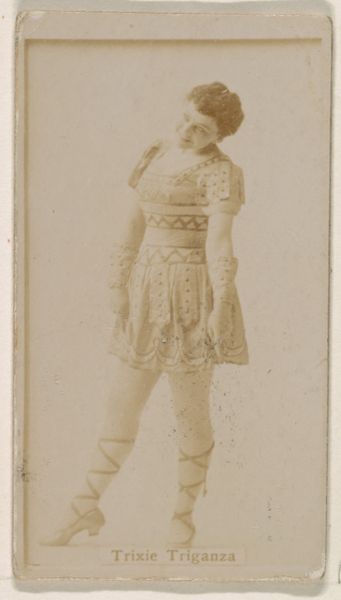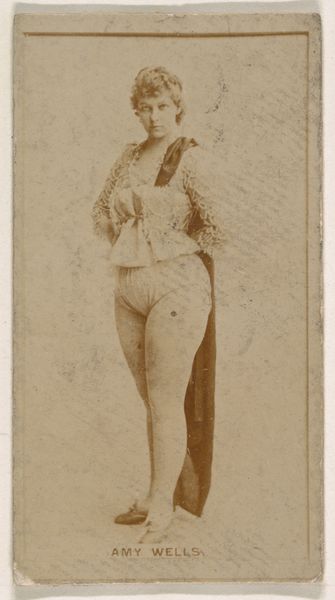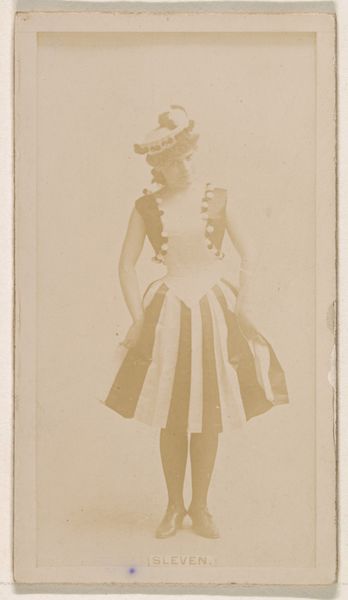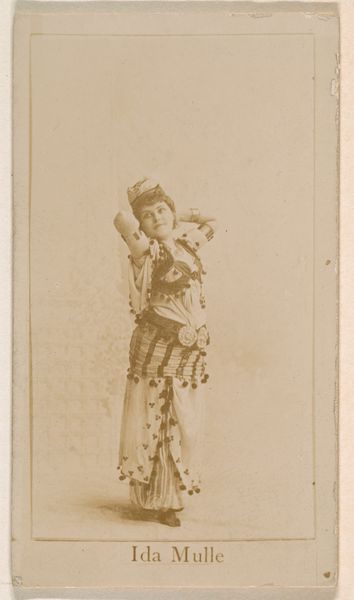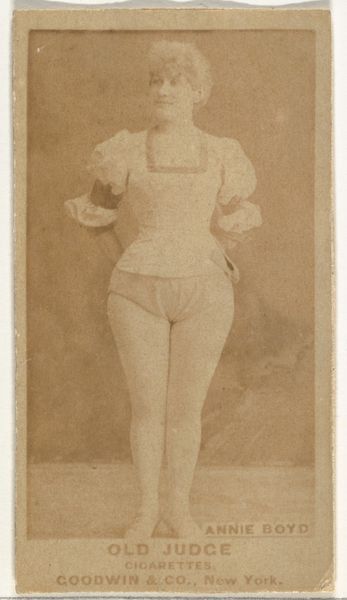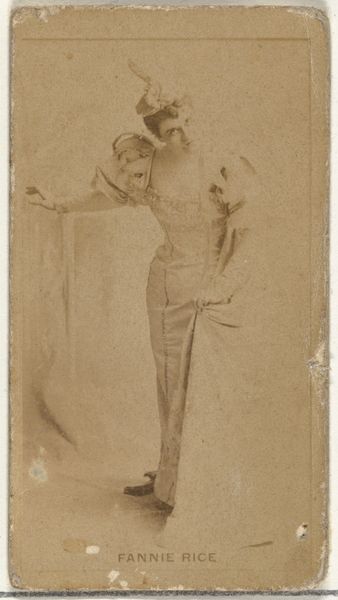
Trixie Triganza, from the Actresses series (N245) issued by Kinney Brothers to promote Sweet Caporal Cigarettes 1890
0:00
0:00
drawing, print, photography
#
portrait
#
drawing
# print
#
photography
Dimensions: Sheet: 2 1/2 × 1 7/16 in. (6.4 × 3.7 cm)
Copyright: Public Domain
Editor: This is "Trixie Triganza, from the Actresses series," made around 1890 by Kinney Brothers, using photography, drawing, and print techniques. It feels… staged, almost like a doll. What do you make of its historical significance? Curator: Well, consider this card not just as art but as a product of its time. Kinney Brothers, a tobacco company, distributed these as promotional items for Sweet Caporal Cigarettes. The "Actresses" series, including Trixie Triganza, reveals the public’s fascination with celebrity, specifically women performers, during the late 19th century. Editor: So, it's marketing, using actresses to sell cigarettes. Was this common? Curator: Extremely common. This points to the intertwining of art, entertainment, and consumerism. These cards circulated widely, effectively shaping and disseminating ideals of beauty, talent, and even social status. It's important to remember who had access to these images. Cigarettes weren’t cheap. Editor: That is so interesting, to think of art as a social tool. What were some of the common perceptions around the distribution of these types of commercial images? Curator: Many worried about the potential moral impact of associating entertainment, women, and readily available goods. Editor: This makes me think about the ways celebrity is marketed today and how much has remained the same! I hadn't considered that so much could be conveyed by something as simple as a cigarette card. Curator: Exactly! Examining this piece unveils layers about the socio-political landscape, consumer culture, and the construction of celebrity. There’s always so much more to these small things than meets the eye!
Comments
No comments
Be the first to comment and join the conversation on the ultimate creative platform.
